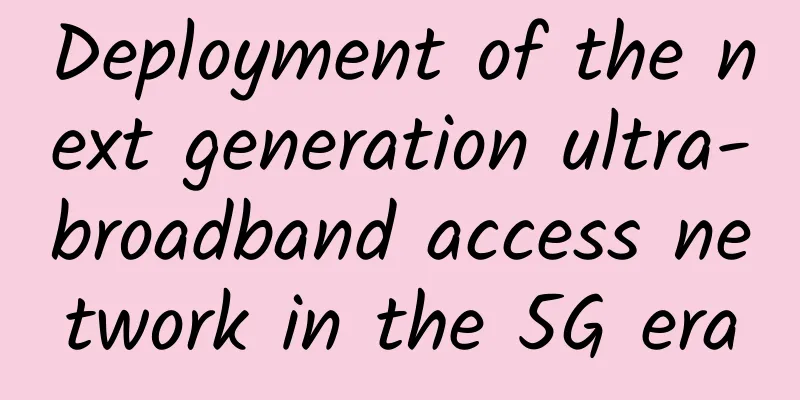Is IPv6 the future trend? What are the technical barriers to deploying IPv6?

|
Nobody's using IPv6? I'm sure there are many people who have heard something similar in conversations, and while it can be difficult to convince these people that more and more organizations are deploying IPv6, especially when the adoption rate has been so slow in the 20 years of existence so far, these instances at least give me a chance to get them thinking about the topic again and share the great work that's been done recently in this space.
It’s encouraging to see that this work, and for all of us IPv6 fans, seems to be paying off, at least for our IPv6 conferences, where we’ve seen an increase in attendee numbers over the past few years. Here are some of the insights I’ve been giving at these conferences lately, and my tips for getting started with IPv6. No shortcuts for IPv6 Many people in our conference are eager to deploy IPv6 but are struggling with the "everything is bigger" mentality. Ideally, they are looking for ways to make IPv6 easier to incorporate into current networks. Unfortunately, there is no shortcut, or one-size-fits-all process to deploying IPv6, it takes time, effort, and upgrades. All of which inevitably require some capital expenditures, which leads many to the second barrier to deploying IPv6: management does not see the additional benefits of deploying IPv6. What is the business case for IPv6? In the eyes of management, IPv6 is an expensive upgrade to an un-cracked technology/protocol. Therefore, a standard question from audience members is “How do I make a business case to management?”. Again, all the business cases we could provide were none. For example, if security is important in your organization, discuss with them how running a dual stack provides better visibility and fewer false positives than using Network Address Translation (NAT). If it's a question of money, explain to management the costs associated with continually upgrading NAT. If it's a question about sustainable network expansion, explain the issue of IPv4 exhaustion and the use of NAT (again) and/or acquiring and consolidating addresses from the transfer market. Learn IPv6 basics now? The following steps are a good start: It's not difficult, but some of the techniques you learned in the past, such as subnetting, you will have to unlearn. Investigate whether all devices and applications in the network are capable of running dual stack? If you recently refreshed your network, this shouldn't be a problem. Start asking your providers and application developers if they support IPv6, and you can be assured that it will help with the transition. |
>>: Simple analysis of the three important requirements for remote network connections
Recommend
China Mobile's Cai Qian: 5G transmission is ready, SPN is about to usher in a new era of bearer
At present, 5G has become a hot topic in the indu...
In the next generation technological revolution, the Internet of Things, who will play the role of “vanguard”?
The Internet of Things (IoT) is widely regarded b...
BuyVM adds new unlocked streaming VPS hosts, 1Gbps unlimited traffic from $5/month
BuyVM has launched the China Special - STREAM RYZ...
Are driverless cars, smart homes, telemedicine, etc. all dependent on 5G?
1. As for the reason why 5G was over-promoted bef...
Detailed explanation of the network model splitting in the network. I finally understood it after being troubled for a long time. Take a look at it in one minute
Seven-layer model decomposition From the applicat...
Edge computing in 5G
01/ Introduction Edge computing is a computing pa...
3 minutes to let you practice the "great movement" of the seven-layer network model
We know that the direct connection between two co...
5G has entered its ramp-up phase, and this key factor determines its success or failure...
[[414891]] This article is reprinted from the WeC...
China Telecom has introduced seven new measures to increase speed and reduce fees
On May 25, China Telecom released its 2019 action...
Large-scale commercial use is imminent! What will be the future development of 5G messaging?
At present, more than 100 operators around the wo...
Seven trends in enterprise networking in 2018
As enterprises gradually establish their own digi...
Regarding 2G network withdrawal, this article can be said to be very comprehensive
The withdrawal of 2G network is actually not a ne...
The Ministry of Industry and Information Technology has indicated 10 important directions for 5G development in 2020!
On January 20, the State Council Information Offi...
WeChat tests voice progress bar function, netizens: finally it's here
The video progress bar was once added by Tencent ...
Maxthon Hosting: Hong Kong CN2/CN2 High Defense/Korea CN2/Germany/Netherlands CU2VIP/Los Angeles CN2 GIA monthly payment starting from 54 yuan
It has been a long time since I shared informatio...









